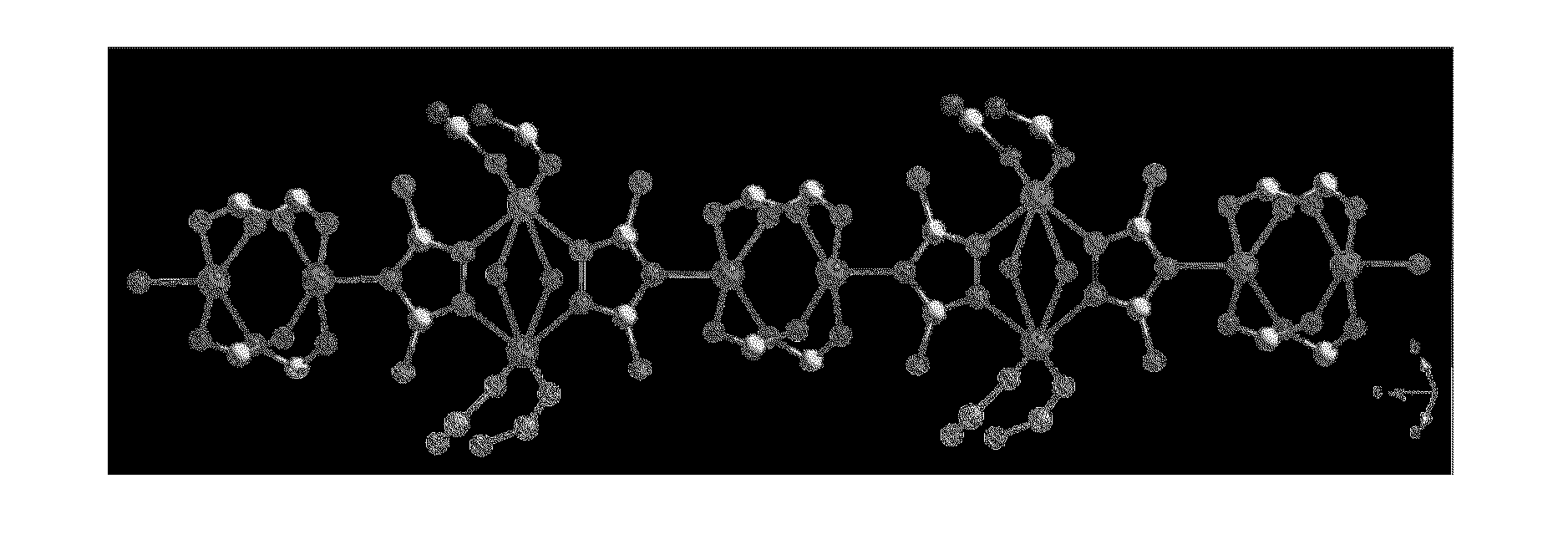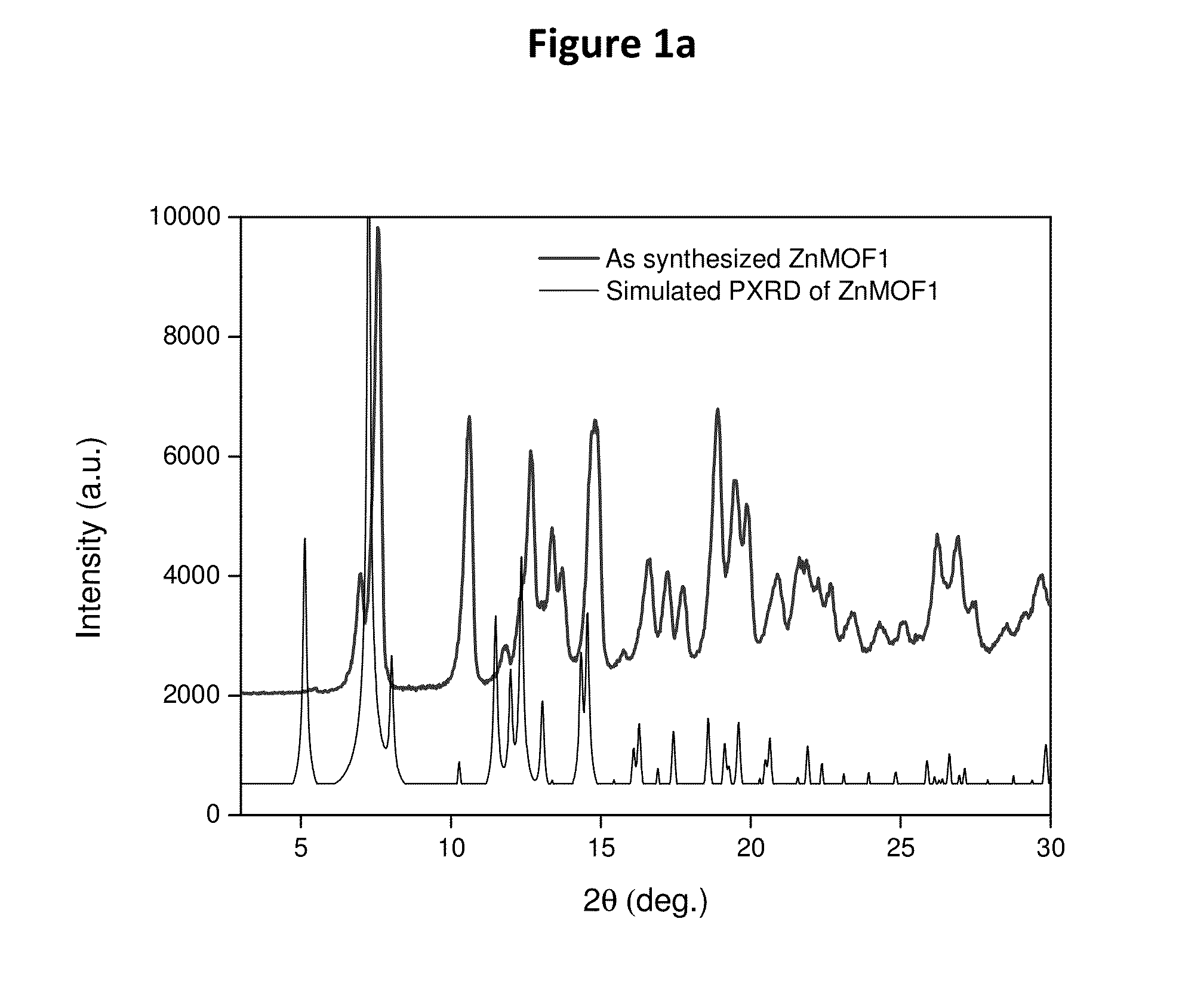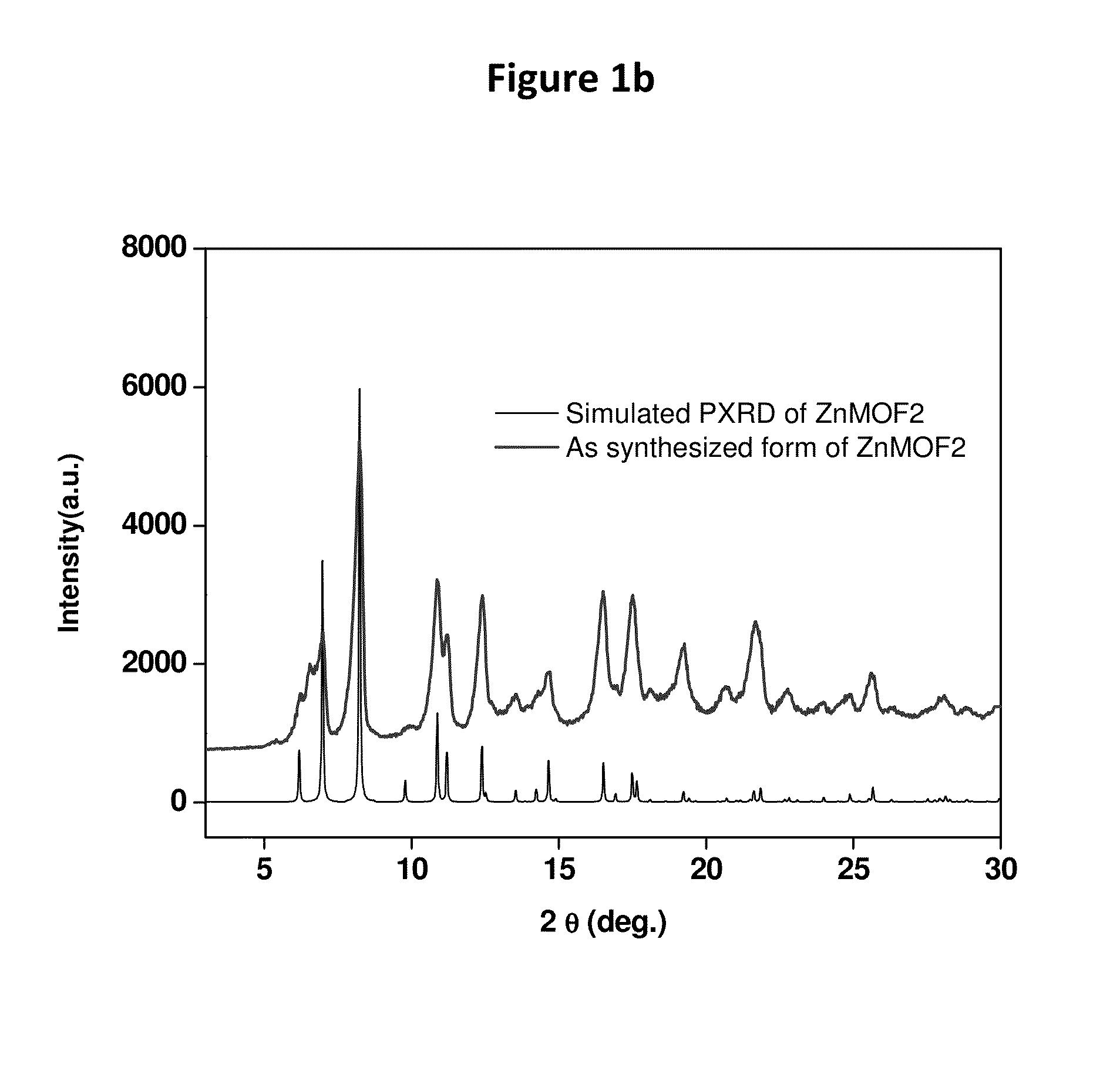Adsorption based air separation using porous coordination polymers
- Summary
- Abstract
- Description
- Claims
- Application Information
AI Technical Summary
Benefits of technology
Problems solved by technology
Method used
Image
Examples
example 1
Synthesis of ZnMOF1 (Zn2(DAtz)(Tp)(HTp)(H2O), Form 1)
[0182]In a typical synthesis, about 0.545 g of zinc acetate dihydrate (2.5 mmol) was dissolved in 25 mL N,N-dimethylformamide (DMF). To this 0.124 g of 3,5-diamino-1,2,4-triazole (1.25 mmol) was added, followed by 0.518 g of terepthalic acid (3.125 mmol). The pH was adjusted to 7.5 using triethylamine. Contents were stirred for 30 minutes before being sealed in a teflon-lined autoclave. The solvothermal reaction was carried out at 90° C. for 72 hrs. A white crystalline solid was obtained which was washed with copious amounts of water, methanol, tetrahydrofuran (THF) and acetone.
example 2
Characterization of ZnMOF1
[0183]Powder X-ray diffraction pattern of ZnMOF1 indicated the presence of a pure phase. See FIG. 1a, Table 1.
[0184]FIG. 1a shows the comparison of the powder x-ray diffraction (PXRD) patterns of the as synthesized phase of ZnMOF1 (top trace) its corresponding simulated PXRD (bottom trace) patterns generated from the single crystal data. Note that in ZnMOF1 case, all the peaks are slightly right shifted and this is due to height offset during the sample preparation.
TABLE 1ZnMOF1 PXRD characteristic peaks2-theta (deg)2-theta (deg)2-theta (deg)
[0185]Thermogravemetric (TGA) studies showed about 30% solvent loss from room temperature to 320° C., which could be attributed to the loss of water and DMF from the pores. See FIG. 2. There is about 30% weight loss due to the solvent and the compound could be stable up to ˜400° C. Note subtle activation procedures would be carried out to maintain smooth solvent loss and retain the porosity at these high temperatures. T...
example 3
Isostructural ZnMOFs
[0193]ZnMOFs wherein the 3,5-diamino-1,2,4-triazole is replaced by 3-amino-1,2,4-triazole (ZnMOF2) or 1,2,4-triazole (ZnMOF3) can be made by increasing the amount of solvent in the synthesis and changing the pH to a slightly higher value as compared to the synthesis conditions of Example 1.
[0194]FIG. 1b shows the comparison of the PXRD patterns of the as synthesized phase of ZnMOF2 (top trace) with its corresponding simulated PXRD (bottom trace) patterns generated from the single crystal data.
TABLE 2ZnMOF2 PXRD characteristic peaks2-theta (deg)2-theta (deg)2-theta (deg)
[0195]FIG. 1c compares the PXRD of (a) diaminotriazolate ZnMOF1 and (b) aminotriazolate ZnMOF2. Note: Arrows indicate a minor impurity phase in ZnMOF2. The impurity phase has been isolated as a pure phase but using diaminotriazole, as described in Example 4.
[0196]FIG. 4 shows the PXRD pattern of the as synthesized phase of ZnMOF3.
TABLE 3ZnMOF3 PXRD characteristic peaks2-theta (deg)2-theta (deg)2-th...
PUM
| Property | Measurement | Unit |
|---|---|---|
| Pore size | aaaaa | aaaaa |
| Adsorption entropy | aaaaa | aaaaa |
Abstract
Description
Claims
Application Information
 Login to View More
Login to View More - R&D
- Intellectual Property
- Life Sciences
- Materials
- Tech Scout
- Unparalleled Data Quality
- Higher Quality Content
- 60% Fewer Hallucinations
Browse by: Latest US Patents, China's latest patents, Technical Efficacy Thesaurus, Application Domain, Technology Topic, Popular Technical Reports.
© 2025 PatSnap. All rights reserved.Legal|Privacy policy|Modern Slavery Act Transparency Statement|Sitemap|About US| Contact US: help@patsnap.com



